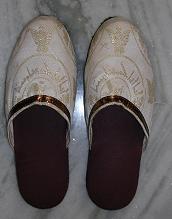In the Orthodox faith, the priest is granted the responsibility of performing the Holy Sacraments. There are seven sacraments in total. They include(in no particular order): Baptism, Confirmation, Eucharist, Repentance, the Order of Priesthood, Unction (Anointing of the Sick), and Holy Matrimony. These priests administer these Sacraments except for the Order of Priesthood.
To enter into the Order of Priesthood many requirements must be met. One requirement is that the chosen candidate must hold the rank of diaconate. Sometimes, there are slight variations to these requirements but anything other then slight is reserved for the diocesan metropolitan, the Holy See, Patriarch, or Catholicos.
Priests of the Malankara Orthodox Syrian Church are allowed to marry but only before they are ordained as priests. If one is ordained as a priest unmarried then one must remain unmarried and celibate until death. After attaining priesthood, a married man in the Malankara Orthodox Syrian Church can be appointed to one more honorary rank known as know as "Cor Episcopa" or "first among the priests". Cor Episcopa are set different from other priests and are given different vestments to signify it. Cor Episcopa is the highest rank a married man can attain in the Malankara Orthodox Syrian Church.
In the celebration of Holy Qurbana the priest wears 8 vestments. Their vestments vary with their hierarchical order in the priesthood. The deacons, the priests, the bishops, and the Catholicos or Patriarch have distinct liturgical vestments.
- The white robe signifies purity and is considered to be the daily dress of the priest. Priests usually dress in a black robe but due to the hot weather in India, white robes were permitted to be worn. If a priest a cor espicopa then they wear a red robe.
- The black cassock (kootheeno) symbolizes the sinful nature of man and is the first of the liturgical vestments worn by the priest.
- The surplice (the white robe) is a white netted robe which indicates that the sins are cleansed and made white as snow and as bright as the blood that Christ shed for us and it also reminds us that we need to worship the Lord in all his glory. It is worn over the cassock and usually has a lace trim.
- The (msone) are ceremonial shoes which are worn during the celebration of the Holy Qurbana. It is the fitted feet of the gospel of peace (Ephesians 6:15) (Isaiah 52:7) (2 Corinthians 10:5). Since animal products are prohibited on the sanctuary, the shoes are not made of leather. Upon wearing the left shoe, the priest recites, "May my feet, O Lord God, be shod with the preparation of the Gospel of peace so that I may tread underfoot serpents and scorpions and all the power of the enemy, for ever. Upon wearing the right shoe, he recites, Cast down under my foot, Lord God, all false pride that is exalted against Thy knowledge, and grant that by Thy help I may bring the lusts of the flesh into subjection, for ever."

- The hamniya (hamnikho) is two ends of the uroro which the deacons wore over the shoulders are stitched together and put over the neck to hang down to the front. The stole symbolize the rope put around the neck of Jesus Christ by the Roman soldiers. Whenever a priest officiates a public prayer as God's minister, he is required to wear it. Also, a priest must wear the hamniya when reading the Gospel. If an occasion arises when a priest is unable to find a hamniya , he ought , says Simon of Thessalonica, to take a piece of material of any sort, a girdle or even a rope, bless it with the sign of the cross, and place it around his neck to represent a hamniya. He signs the cross over it twice, reciting Psalm 18:39, 40: "Gird me with strength unto the battle and subdue under me them that rise up against me, defeat my enemies and silence those who hate me."
- The girdle (zenoro) is the belt which is worn around the waist and entails the priest’s control over all bodily desires.. He signs the cross over it once reciting Psalm 45:3: "Gird thy sword upon thy thigh, O thou most mighty with thy splendor and glory. Thy glory triumphs."
- The zindo (zende) are sleeves worn on each forerarm. wears on both hands. It symbolize the priest's readiness to keep God's Law and do works of righteousness. He signs the cross twice over the left sleeve and recites Psalm 18:34 while wearing it: "He trains my hands to war; and he strengthens my arms like a bow of brass." He then signs the cross once over the right sleeve and recites Psalm 18:35 while wearing it: "Let Thy right hand help me up, and let Thy loving discipline raise me."
- The kappa, (phayno), a chasuble or cope which symbolizes Aaron's robe of many colors and the Savior's seamless robe. He signs the cross over it thrice reciting Psalm 132:9-10: "Let Thy priests be clothed with righteousness and Thy righteous with glory. For Thy servant David's sake, turn not away the face of thine anointed." Then he puts it on reciting Psalm 132:9: Clothe Thy priests with salvation and Thy saints with glory.
- If the priest is a cor espicopa then they wear a additional cope (goori).



No comments:
Post a Comment